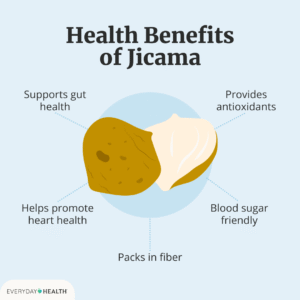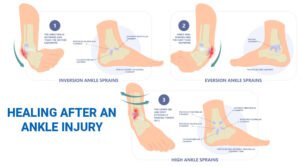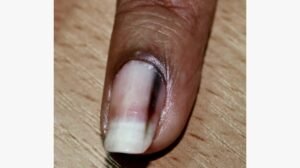Painful Swallowing
Understanding Painful Swallowing: Causes, Symptoms, and Treatment
Reading Time: 10 minutes
Painful swallowing, also known as odynophagia, can feel like a burning or squeezing sensation in the throat or chest. This discomfort may be experienced anywhere from the neck to the breastbone. Painful swallowing can stem from various causes, including infections, acid reflux, or esophageal damage. In this article, we will explore what causes painful swallowing, when to be concerned, and how to manage it.
What Are the Symptoms of Painful Swallowing?
In addition to pain when swallowing, those suffering from odynophagia might experience:
-
Mouth ulcers or sores
-
A burning sensation while swallowing
-
The sensation of food being “stuck” in the throat
-
Acid reflux or indigestion
Painful swallowing often feels like a squeezing or burning sensation. It can occur in the upper neck or behind the breastbone.
Medical Emergencies Related to Painful Swallowing
Sudden difficulty swallowing can indicate a medical emergency and may require immediate medical attention. Conditions that warrant urgent care include:
-
Stroke: Symptoms of a stroke can include sudden difficulty swallowing, weakness, drooping of one side of the face or body, speech problems, vision loss, dizziness, confusion, and other neurological signs.
-
Angioedema: This is the swelling of tissues beneath the mucous membranes of the mouth and throat, which may affect breathing. It is often accompanied by swelling of the lips and tongue, hoarseness, drooling, and more.
Common Causes of Painful Swallowing
Painful swallowing can result from a range of factors, including:
Infections:
-
Viral infections like the common cold or flu
-
Bacterial infections, such as strep throat
-
Herpes simplex virus
-
Gum or tooth infections
-
Tonsillitis (infection of the tonsils)
-
Cytomegalovirus (similar to viruses that cause chickenpox or mono)
-
Fungal infections like thrush (especially in people with weakened immune systems)
-
Peritonsillar abscess (a pus-filled tissue near the tonsils)
-
Ear infections (otitis media)
Conditions Affecting the Throat and Esophagus:
-
Gastroesophageal Reflux Disease (GERD): Stomach acid flows back into the esophagus, causing irritation.
-
Esophagitis: Inflammation of the esophagus lining.
-
Esophageal spasms and nutcracker esophagus: Strong, often painful swallowing contractions.
-
Gingivitis: Gum disease that can affect swallowing.
-
Ulcers: Sores in the mouth, throat, or esophagus.
-
Laryngitis: Swelling of the vocal cords leading to difficulty swallowing.
Physical Injuries or Irritants:
-
Food or objects stuck in the throat
-
Scratches, cuts, or irritations in the throat or esophagus
-
Burns from hot foods or drinks
Medications That Can Cause Painful Swallowing
Certain medications can lead to ulcers in the esophagus, including:
-
Tetracyclines (antibiotics)
-
Aspirin
-
Nonsteroidal Anti-inflammatory Drugs (NSAIDs) like ibuprofen (Advil/Motrin) and naproxen (Aleve)
How to Treat Painful Swallowing
Treatment for painful swallowing depends on the underlying cause. Common treatments include:
-
Antibiotics for bacterial infections like strep throat
-
Symptom relief with over-the-counter (OTC) lozenges or throat sprays
-
Pain control with medications like acetaminophen (Tylenol) or NSAIDs
Lifestyle Adjustments:
-
Eat softer foods and avoid foods that are too hot, cold, or spicy.
-
Quit smoking, which can aggravate the throat.
-
Try using a local anesthetic containing lidocaine (in spray or oral form) to numb the throat.
-
Drink plenty of fluids and use a straw to make swallowing easier if your mouth is irritated.
Eating Tips for Those with Painful Swallowing
To make eating easier, try the following tips:
-
Choose soft, moist foods that are easy to chew and swallow.
-
Finely chop, mince, blend, or puree foods to make them more manageable.
-
Use sauces, gravies, or warm drinks to moisten food and aid in swallowing.
-
Avoid dry, crunchy foods like chips and cookies, as they may irritate the throat.
-
Avoid acidic or spicy foods that may cause discomfort.
If painful swallowing leads to eating less or losing weight, try smaller, more frequent meals and foods higher in protein or fat. Smoothies, milkshakes, and supplement drinks can also help.
Complications of Painful Swallowing
Ongoing pain from swallowing can lead to several issues, including:
-
Dehydration and lack of food intake
-
Unintentional weight loss
-
Decreased physical health and quality of life
How Doctors Diagnose the Cause of Painful Swallowing
A healthcare provider will typically start with a physical examination and ask questions about your symptoms and medical history. They may inquire about the following:
-
The nature and pattern of the pain (constant, intermittent, worsening, etc.)
-
How the pain feels (sore throat, sensation of a lump, etc.)
-
The impact on swallowing (pain with liquids, solids, or both)
-
Any recent exposure to irritants or chemicals
-
Other accompanying symptoms
-
Medications you are taking
If necessary, doctors may perform diagnostic tests such as:
-
Strep throat tests: A rapid antigen test or throat culture.
-
Endoscopy: A flexible tube with a camera to examine the throat and esophagus.
-
Barium swallow: A series of X-rays taken after drinking a barium solution.
-
Esophageal pH monitoring: Measures the acid level in the esophagus.
-
Esophageal manometry: Tests pressure in the esophagus.
When to See a Healthcare Provider
Consult a medical professional if:
-
The painful swallowing persists or worsens.
-
You notice blood in your stools (or if they appear black or tarry).
-
You experience shortness of breath, wheezing, or dizziness.
-
Unexplained weight loss, fever, chills, abdominal pain, or nausea occur.
Can Painful Swallowing Be a Sign of Cancer?
Though painful swallowing can be a symptom of esophageal cancer, many other, more common conditions can cause similar symptoms. If you experience pain while swallowing along with:
-
Persistent indigestion or heartburn
-
Unexplained weight loss
-
Pain in the throat or chest
It’s important to see a healthcare provider to rule out other conditions.
FAQs
Is Painful Swallowing a Sign of COVID-19?
Painful swallowing could be a symptom of various conditions, including viral infections like COVID-19. However, it is not exclusive to COVID-19. Testing is recommended if you suspect you have COVID-19.
How Can I Relieve Painful Swallowing from a Sore Throat?
Symptom relief can include drinking warm fluids, using throat lozenges, and avoiding irritants like smoking and spicy foods. Over-the-counter medications may also provide relief.
Is Painful Swallowing a Medical Emergency?
In some cases, such as when accompanied by difficulty breathing or severe chest pain, painful swallowing may be a medical emergency. Seek immediate medical attention if symptoms are severe or sudden.
Expert Tips
-
Try incorporating seasonal variations into your meals for added variety.
-
Simplify meal prep with shortcuts for time-sensitive tasks.
-
Adapt recipes for dietary restrictions, offering alternative ingredient suggestions.
Key Takeaways
-
Painful swallowing can be caused by a variety of conditions, from infections to physical injuries.
-
Treatment depends on the underlying cause and may involve lifestyle changes, medications, and diagnostic tests.
-
If you experience persistent symptoms or severe complications, consult a healthcare provider for evaluation.





